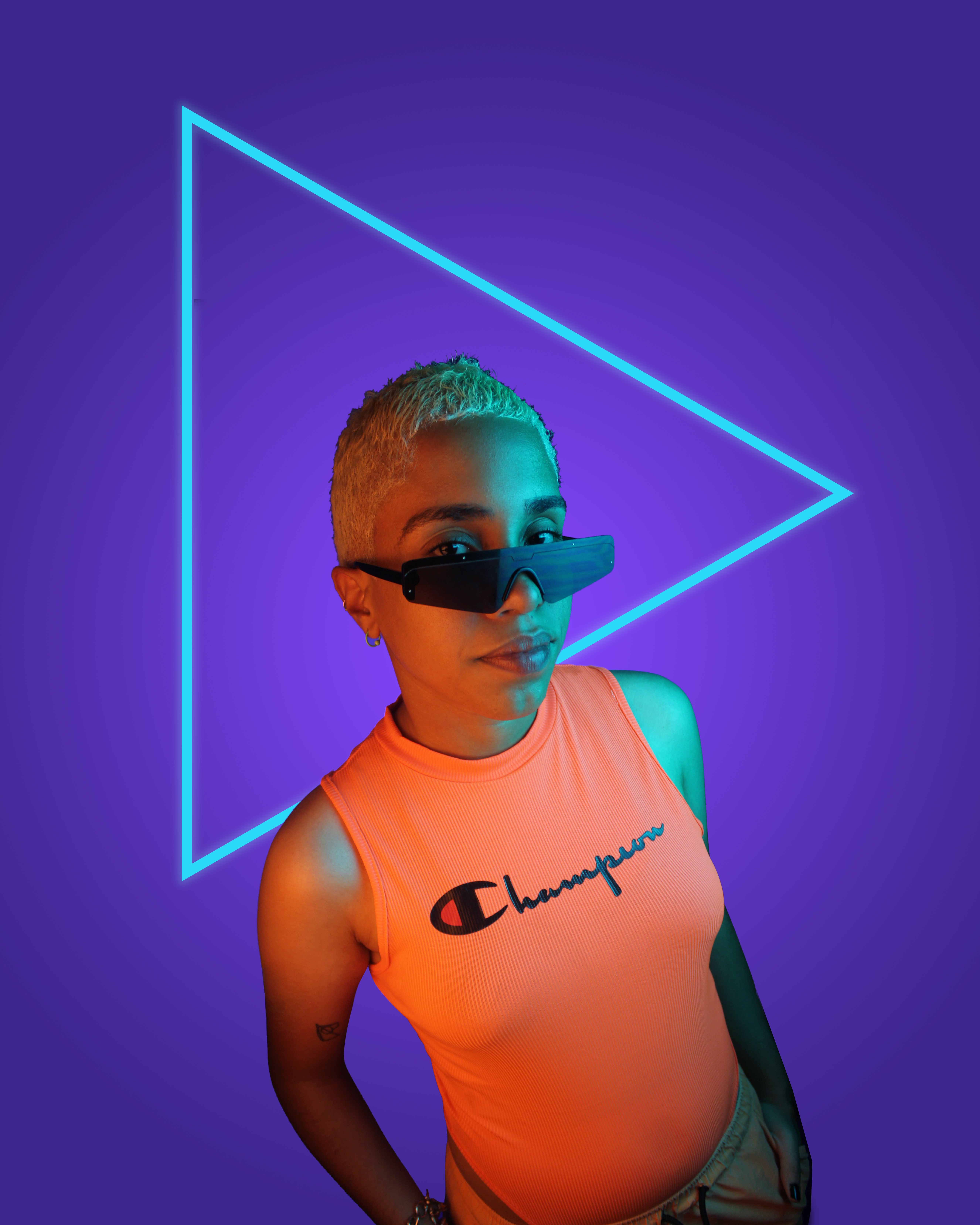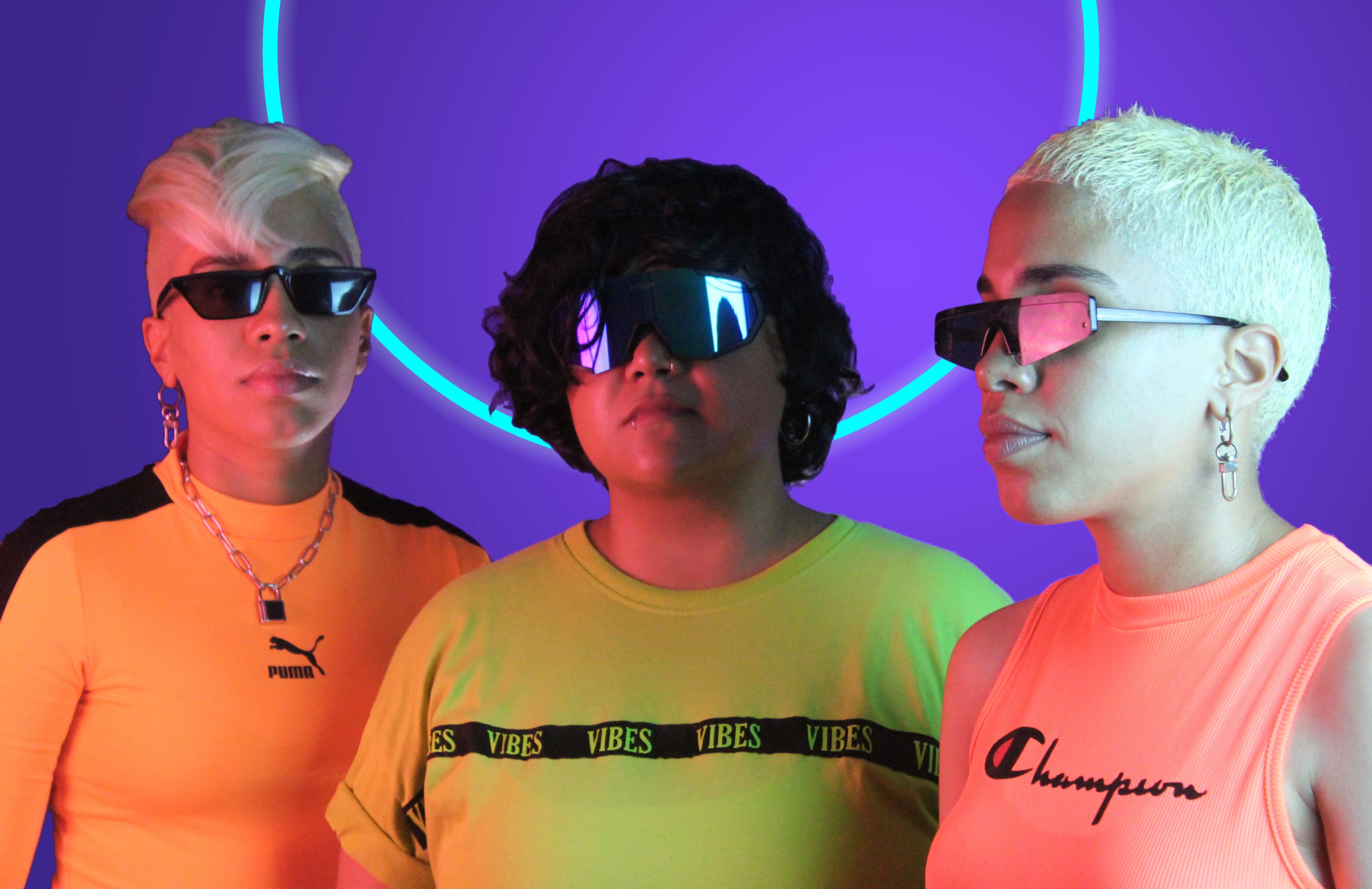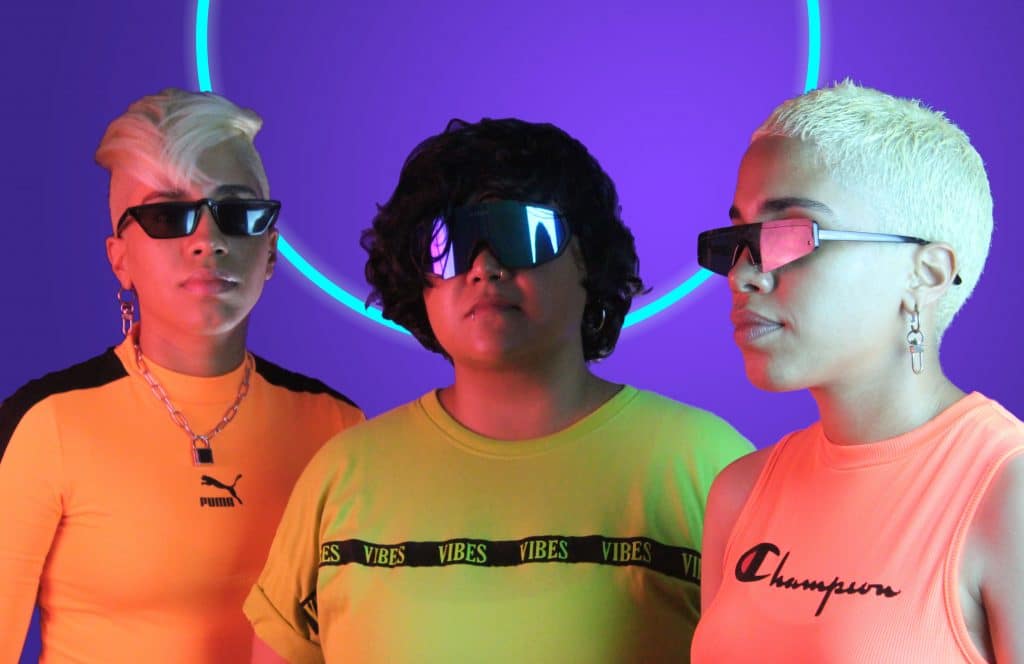The nagging curiosity about an ex-partner’s life post-you can linger for months, years – maybe forever, depending on the intensity of the time shared. Thanks to socials, lurking can mostly scratch this itch. But internet voyeurism is nothing compared to running into that person IRL.
MULA canalizes that kind of encounter on “Y Ahora,” the Santo Domingo alt-dembow trio’s new single, released on Monday. It’s an emotional rush, and ultimately a crushing one, to see firsthand that, as suspected, the person you never forgot, as vocalist Anabel Acevedo tells Remezcla, really is doing just fine without you.
Granted you can see their accounts, that neither of you blocked the other, you probably already knew that. Still, an unexpected face-to-face can be jarring.
Revisiting history, though, is often beneficial; hindsight offers new insight. And on their forthcoming album – which will include “Y Ahora” – MULA is revisiting their own musical past.

Slated for release around February or March of next year, this new collection will lean more toward a dance floor-ready electronic feel, like the group’s house and D&B-tinged debut – minus the 2015 self-titled album’s experimental twists and turns. At that time, save for a few songs, like “Playa,” dembow wasn’t as an obvious a rhythmic element in MULA’s sound as compared to its centrality on the trio’s brilliant, delicately pulsing follow-up, Aguas. Touches of contorted Dominican palo and merengue came with that 2017 release, too.
This next phase, however, is a fusion of both pasts, with the addition of time-earned maturity, vocalist Anabel Acevedo and producer Rachel Rojas say. (Anabel’s sister and co-vocalist, Cristabel, was unavailable for interview.)
“I definitely think we’re still doing the same thing but it does sound different,” Rachel says. “It sounds fresher, more futuristic, [with] a lot more electronic elements, and a little harder, a little tougher.”
Two years spent performing throughout Central and South America, the Caribbean, Spain and the U.S., and tours at prominent festivals, like Estéreo Picnic in Bogotá and Festival NRML in CDMX, developed in the three musicians a desire to make songs that are decidedly danceable.
In a way, this move is like catering to the audience – but it is not a targeted try for achieving mainstream popularity. If it happens, that’s fine, Rachel and Anabel Acevedo casually agree when prompted. But they make clear that’s not their goal now, nor has it ever been.

“We are focused on making music that we like,” says Rachel. “That’s like the goal of the three of us: loving what we do. To make music for a specific public, or a specific movement? We’ve never tried that, no way. We just keep doing what we like; the music we love to do.”
While reggaeton, dembow and Latin trap very much deserve the recognition and accolades (finally) garnered in the past few years, space for alternate perspectives and styles under the umbrella of urbano remains limited. Queer acts like MULA, Mexico’s Sailorfag, and La Pajarita La Paul, also from the DR, are each obviously sonically distinct, yet easily bridged by root genres – and none are afforded so bright a spotlight as their major-label counterparts. That’s nothing new, of course; it’s the same story for independent artists in every genre.
Still, embracing the so-called “outsiders” is an obvious route to diversifying what, if you look at the hit-makers of urbano, is becoming somewhat homogeneous. That some artists have begun to confront urbano’s seemingly impervious machismo, and that we count far more prominent women artists in reggaeton today than ever before, is not enough.
Artists in these genres thrive on collaborations; everyone’s guesting on someone else’s track. But the mainstream-centered artists aren’t working regularly with those on the independent fringes. MULA has tapped into collabs, though, like this year’s “Hipnótico” with Colombia’s CERO39. More recently they released “Te Encontré,” a joint with Moombahton originators Tittsworth and Dave Nada – who, it’s important to note, have worked with the iconic DJ Blass. Is that track an indication that the degrees of separation between indie and mainstream are decreasing? Blass has collaborated with Chilean neo-perreo pioneer Tomasa del Real, after all.

But Tomasa, who flips the power script in flaunting her own sexual agency, in terms of looks and style, she still more closely resembles the patriarchy’s ideal woman than the members of MULA.
Rachel and Anabel are both self-described outsiders. They note that while feminity is a critical element of their sound, their version of femininity isn’t the typically coded one. “That’s something I’ve always gotten, that we’re just weird girls,” Anabel laughs. “Here in the Dominican Republic, most of the people, they wear the same clothes, and everybody has long hair. We’ve always been a little weird, but that doesn’t make me less of a girl. I’m just different.”Rachel chimes in, “I’ve always been a little weird too, a little tomboyish. I think that’s why we three clicked.”
The general understanding of urbano does not include groups like MULA, and so it’s an incomplete picture of the perspectives that exist within it.“What I would like,” Rachel says,” is to have different people telling different stories, and that they’d all be valid. A little of everything…and that [those perspectives] are [considered] mainstream, too.”
Consider also that, in terms of Latinx or Spanish-language musicians, it’s mainly urbano-pop artists rising to prominence. Anabel notes that in the DR, dembow dominates the radio. And while she loves the sound, what about those who don’t? What about the other styles of Latinx music-makers?“I feel like right now, you only hear one thing, the same messages,” Anabel says. “I wish the diversity was more marked, that the world was more open to diversity not only in music, but in people – for diversity to be normalized.”
Imagine the encounter in “Y Ahora” told from a cishet male perspective – or anyone but MULA’s, really. It wouldn’t be the same song, would it?
Stream “Y Ahora” here:




